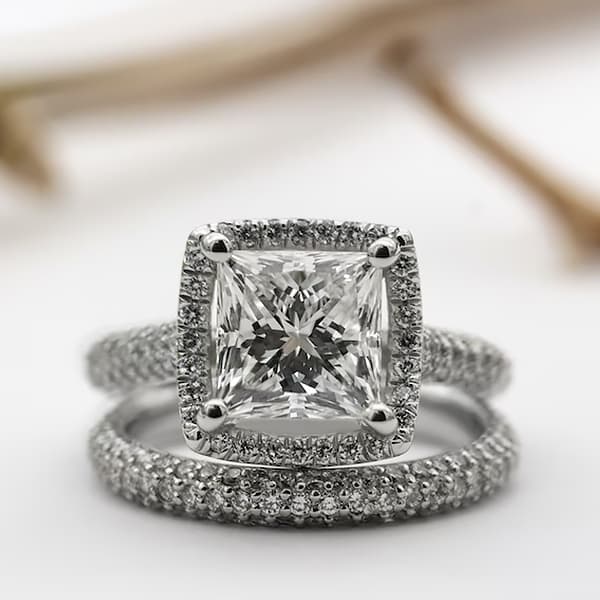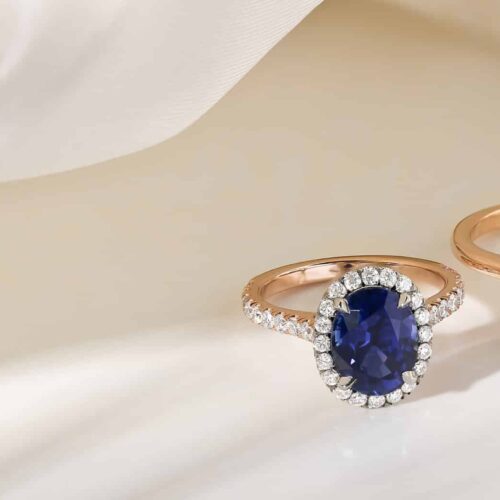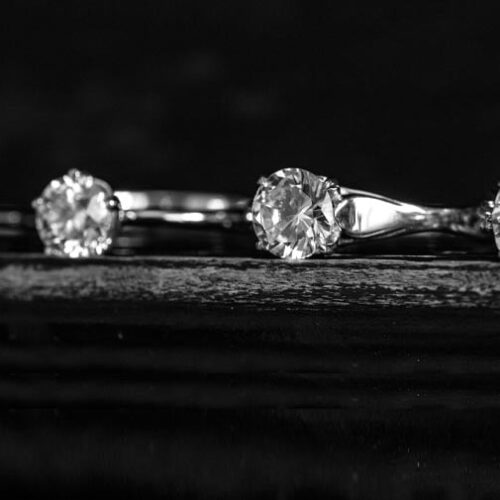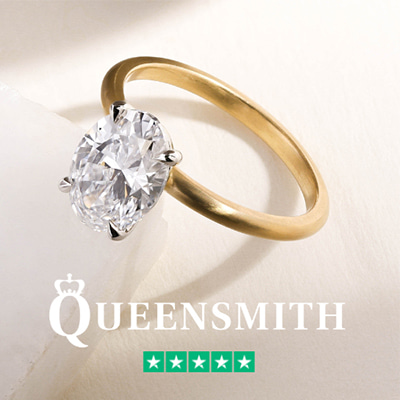Lab-grown diamonds are getting ever popular these days. More and more people are realizing how good a choice it is because it gets the job done without putting a dent in one’s wallet. Many are still unconvinced with its charm and practicality though. Many still think that real diamonds are the only way to go. So to make it easy for you to determine if a lab-grown diamond is the best fit for your needs, we took it upon ourselves to compare lab diamonds and real diamonds. We found seven aspects where they differ and you’d read about them all in this post.
A lab-grown diamond is one that was grown in a laboratory through Chemical Vapor Deposition (CVD) or High-Pressure Temperature (HPHT). With advanced technology, scientists are not able to create diamonds that exactly look like earth-mined diamonds. The similarity is intense as it has the same physical and chemical attributes as an earth-mined diamond.


Are they real?
Absolutely! Lab-grown diamonds are real diamonds! It just so happens that they were not mined from the earth. They are so real that their size, shape, clarity grades, and colour are exactly the same as natural diamonds. They sparkle the same and weigh the same. They also evoke the same magic and wonder when seen. Diamond experts even no longer refer to them as synthetic diamonds as they have the same durability and hardness level as that nature-grown diamonds.
Real Diamonds
Real diamonds on the other hand are naturally found and mined on the earth. They originated from rocks found in vertical layers that had chemical reactions with igneous rocks. It is made of carbon that underwent rough pressure. Such rough pressure lead to carbon atoms bonding together. Such bonding creates the very crystals that we all see in diamonds. It was first found in India in the 4th century BC. But the very first of such formation took place 900 million years ago. Real diamonds are very old rocks that underwent intense pressure.
Main Differences Between Lab Grown Diamonds and Real Diamonds
The following are the main aspects where lab-grown diamonds and real diamonds differ:
1. Mode of creation
This is the very main thing that differentiates lab-grown diamonds from real diamonds. They were not created in the same way.
Lab-grown diamonds are not mined. They are grown in the laboratory. Such a process can take up to one to two weeks. Real diamonds on the other hand need to be mined. It also takes millions of years to grow one in nature.
2. Chemical make-up
The two are almost identically the same when it comes to chemical makeup. This is why both can look exactly the same to the naked eye. The only part where they differ is in nitrogen content. Real diamonds pulled from the earth have tiny amounts of nitrogen. Lab-grown diamonds have no nitrogen whatsoever.
3. Price
This is the difference that most people are familiar with. As you may already know, a real diamond is more expensive than a lab-grown diamond. This is mainly because the process of creating and retrieving them varies immensely. With real diamonds, you would need miners who dig night and day to come up with one. With lab-grown diamonds, you won’t need labourers at all. All you’d need is a scientist and a functioning laboratory. This is why lab-grown diamonds can be 50% – 60% cheaper than real diamonds.
4. Resale value
Real diamonds are hard enough to resell. Most only retain 50% of their original purchase value. Hence, reselling a lab-grown diamond at a chunky price is close to impossible. It loses massive value once purchased. If real diamonds have a chance of being more valuable through time, such is not the case with lab-grown diamonds. You cannot and should not expect its value to grow through time.
5. Reputation
Lab-grown diamonds have a better reputation than real diamonds. This is why they are more preferred by environmentally conscious individuals. If you’re familiar with blood diamonds, then you already know what I mean. A blood diamond is one that is mined in a place where there is an ongoing war. Such are sold to finance wars and warlord activities. Wearing one does not feel good at all because it’s impossible for any person (in love or not) to feel okay with supporting a war or a warlord by mere purchase. The mining of real diamonds is not entirely unethical, however, opting for lab-grown diamonds is more sustainable in the long run.
6. Desirability
As they have different reputations, they are desired by different sets of people. Lab-grown diamonds are desired mainly by environmentally and ethically conscious individuals. Real diamonds on the hand are highly preferred by traditional individuals that prefer mined diamonds that come with prestige, grandeur, and exclusivity.
7. Certification
Lab-grown diamonds also come with a certification. They receive such certification from the International Gemological Institute (IGI) and the Gemological Institute of America (GIA). Real diamonds are mainly certified exclusively by GIA. During certification, a diamond’s quality is evaluated depending on 4Cs – carat, clarity, colour, and cut.
Are they the same?
So, are lab-grown diamonds and real diamonds the same? Practically, yes. Just that there are some nuances that one can easily pinpoint. On matters apart from the ones we discussed here, they’re virtually the same.
Reference: Diamonds Unearthed https://www.smithsonianmag.com/science-nature/diamonds-unearthed-141629226/#:~:


















